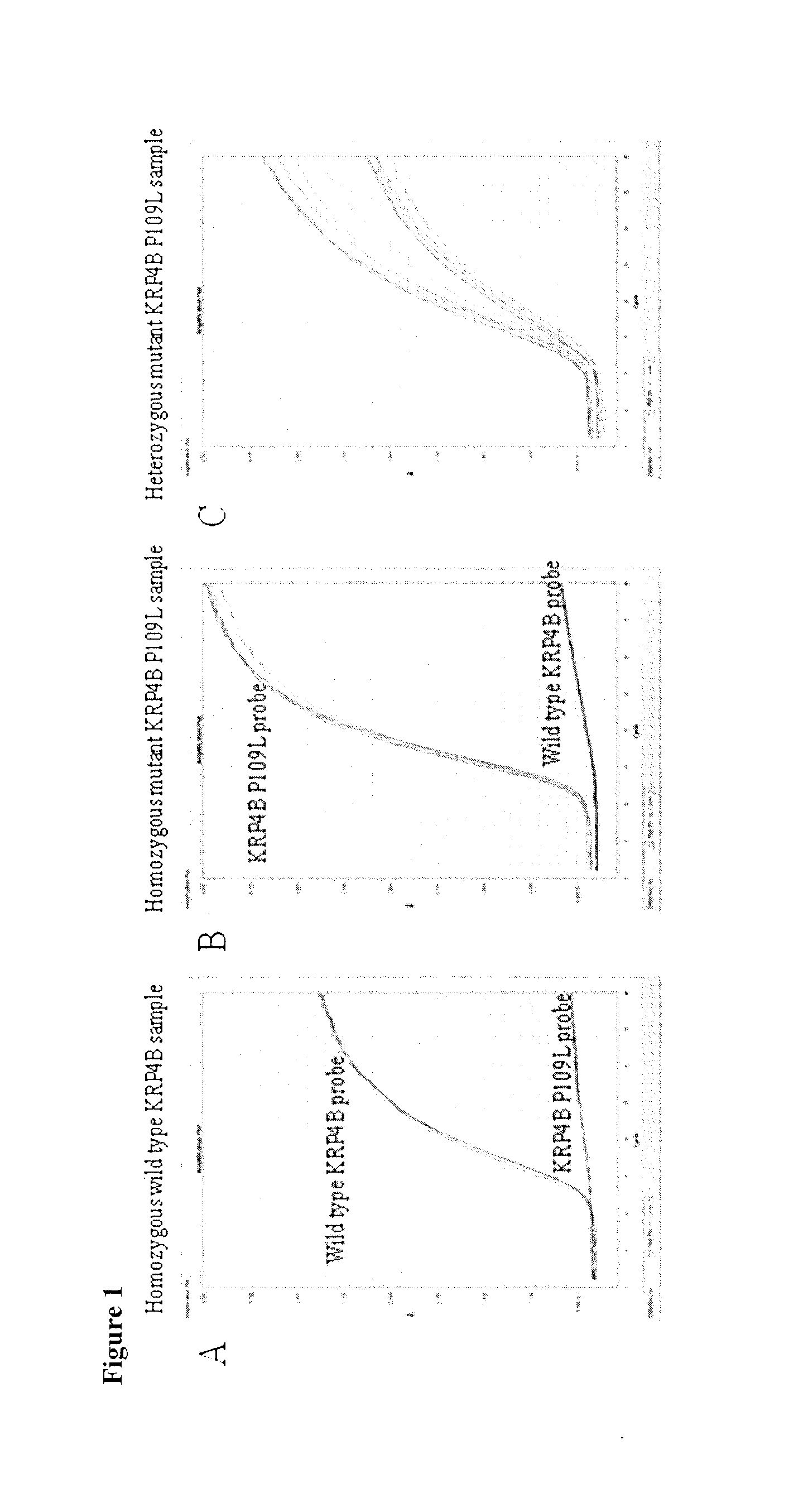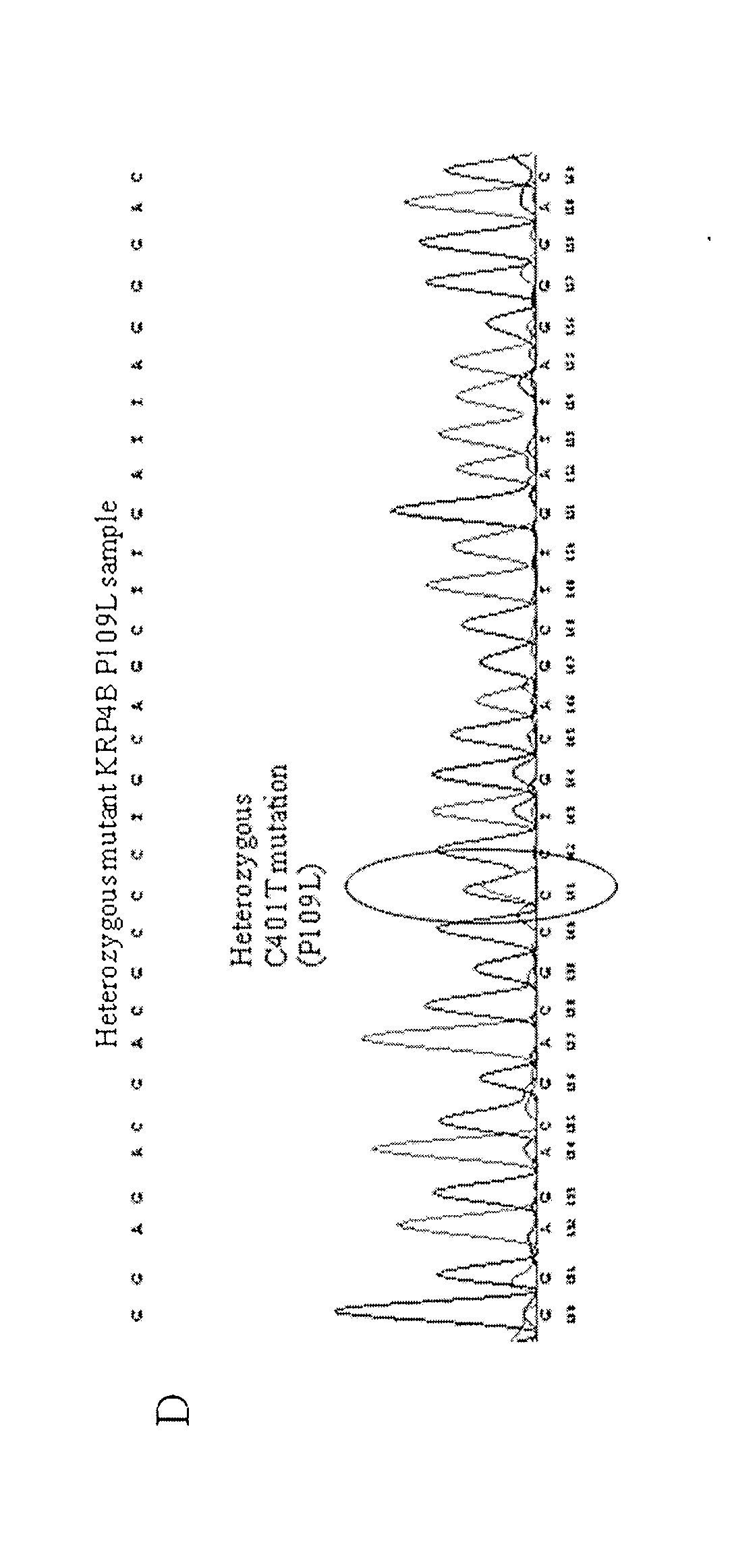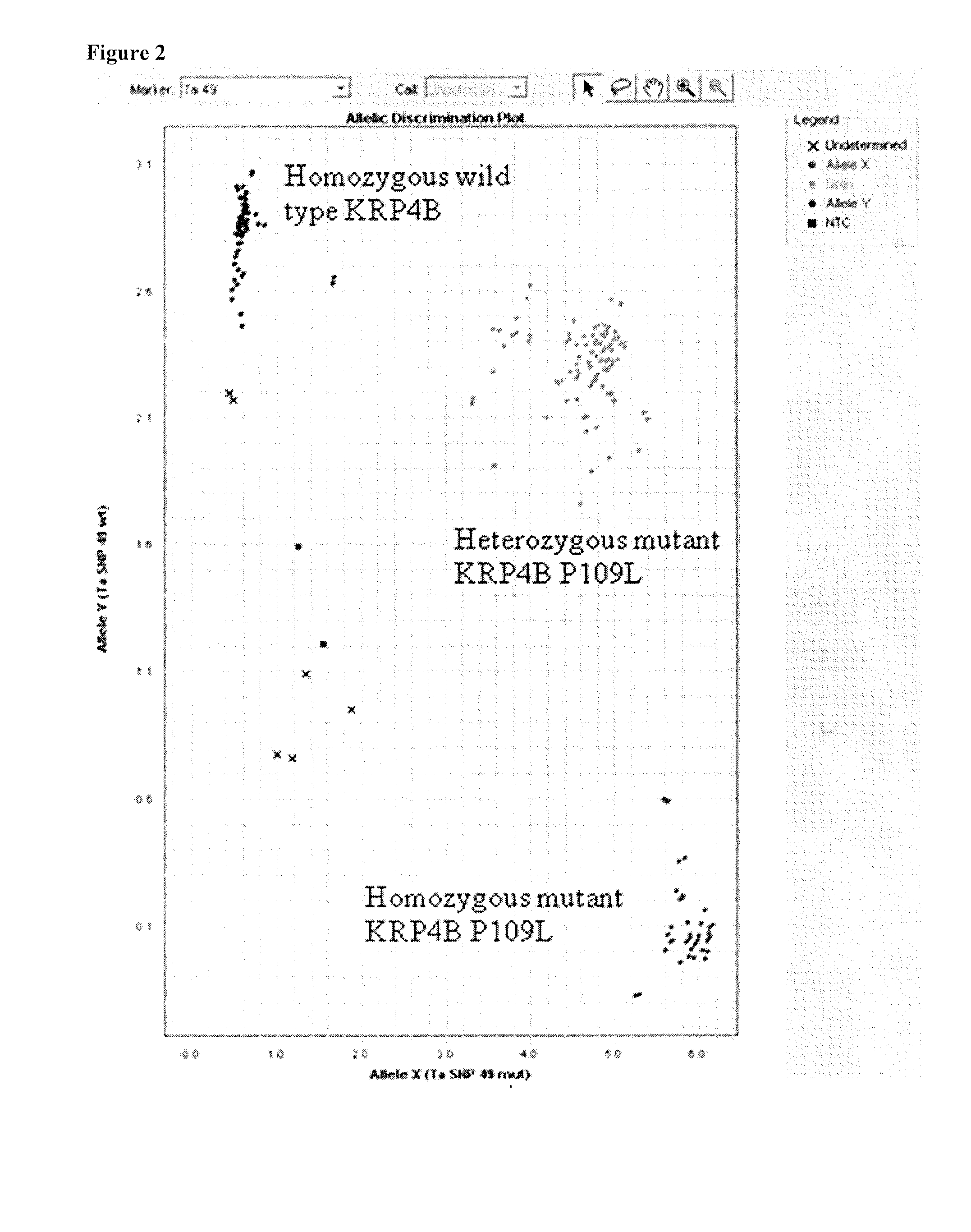Identification and the use of krp mutants in plants
a technology of krp mutants and plants, applied in the field of identification and the use of krp mutants in plants, can solve the problems of not providing fundamentally improving crop yield, becoming smaller, and more difficult to obtain, and achieve the effects of increasing the number of one or more organs in the plant, increasing the weight, size and/or number of one or more plants, and increasing the number of plants
- Summary
- Abstract
- Description
- Claims
- Application Information
AI Technical Summary
Benefits of technology
Problems solved by technology
Method used
Image
Examples
example 1
TILLING for Triticum KRP mutants
[0261]Genome-specific primers were designed and used to TILL for wheat KRPs (Table 1).
TABLE 1Genome-specific primers used for TILLING ® of wheat KRP genesGene / SEQGenome†Primer namePrimer Sequence (5′→ 3′)ID NOKRP1A_2-4TaKRP1A_LGGATACGATTCGAGATCTCCTTTTTGAC 6TaKRP1A_RTGATAATGGTGGGAATATGTGAGCGAGTG 7KRP1B_2-4TaKRP1B_LAAACAGCAAGGTGAGGGAATTGGGGTC 8TaKRP1B_RTAATGTTCTTTCCGGAGCATCTTTTTCC 9KRP1D_2-4TaKRP1D_LGGATACAATTCGAGATCTCCTTTTTGCTG10TaKRP1D_RTAATGCTTCTTTCCGGAGCATCTTTTTCC11KRP2A2TaKRP2A2L1GCCACTCACTGCCCTAGAATTCTCCGTA12TaKRP2A2R1CAATTTGGATGGGGAGAGAGAGAGAGCTAGTGT13KRP2B2TaKRP2B2L2GTCCACTGCCCTAAATTCTCCGCTACTT14TaKRP2B2_altRGCCGTGGCCTAGTGAAAGGTAAAAAGAAA15KRP2D2KRP2D2_ENDEX1_LTCCACTGCCCTAGAATTCTCCGCTAAT16KRP2D2_ENDEX4_RGTCATTTGCATCATGCTCTGCTCACAC17KRP4B2KRP4B_L_2_3_NEWTTCCTTATTTTTTATGACTATTGATATGTGTTCTTC18WKP4_BR2GTGGTCATTACAGAATGAGCTGCTAACCGTT19KRP4D2KRP4D_L_2_3_NEWTTACGACCACCGATGATATCGATATGTG20KRP4D_R_2_3_NEWCATTGGAGTTTTGAGGGATTAGGGTGT21KRP5A1TaKRP5A1_LGGCAAGT...
example 2
Mutations of Triticum KRP Genes Identified in TILLING®
[0262]Screening of the TILLING® population for KRP mutants resulted in plants with silent, splice, nonsense (premature stop codons) and / or missense (severe or non-severe) mutations in KRP1, KRP2, KRP4 and KRP5 (A, B, and D genomes) genes.
[0263]Positions and effects of mutations in KRP1, KRP2, KRP4 and KRP5 (A, B, and D genomes) genes are displayed in Tables 2 to 12 below (* indicates the mutation results in a stop codon, =indicates silent mutation).
TABLE 2Summary of Triticum turgidum ssp. durum (tetraploid) KRP4B mutantsNucleotideChange{circumflex over ( )}EffectGeneMutation ScoreG389AR4K£KRP4B2§Severe MissenseG390AR4=KRP4B2SilentC400TP8SKRP4B2Severe MissenseC408TS10=KRP4B2SilentC457TP27SKRP4B2MissenseG461AS28NKRP4B2MissenseC465TH29=KRP4B2SilentG486AV36=KRP4B2SilentG496AA40TKRP4B2MissenseG520AA48TKRP4B2MissenseG525AE49=KRP4B2SilentC540TF54=KRP4B2SilentG550AE58KKRP4B2Severe MissenseG564AQ62=KRP4B2SilentG587AIntronKRP4B2G635AIntron...
example 3
Wheat Breeding Program
[0264]The wheat KRP TILLING® mutants are prioritized for the breeding program in the following manner: 1) Nonsense and splice mutants; 2) Type I severe missense; and 3) Type II severe missense. Type I severe missense mutations are non-conservative amino acid substitutions in regions of the KRP protein known to be essential for binding to cyclin or cyclin-dependent kinase (CDK) and are predicted by SIFT analysis to be deleterious to protein function. Type II severe missense mutations are non-conservative amino acid substitutions outside of the cyclin and CDK binding domains but which satisfy two additional criteria. First, they are in regions of the protein determined by BLOCKS analysis (Henikoff, S. and Henikoff J. G. (1991) Nucleic Acids Res., 19, 6565-6572) to be evolutionarily conserved and therefore possibly of functional significance. Secondly, they have a SIFT (Ng, P. C. and Henikoff, S. (2003) Nucleic Acids Res. July 1; 31(13): 3812-3814) score of less t...
PUM
| Property | Measurement | Unit |
|---|---|---|
| Tm | aaaaa | aaaaa |
| temperature | aaaaa | aaaaa |
| temperature | aaaaa | aaaaa |
Abstract
Description
Claims
Application Information
 Login to View More
Login to View More - R&D
- Intellectual Property
- Life Sciences
- Materials
- Tech Scout
- Unparalleled Data Quality
- Higher Quality Content
- 60% Fewer Hallucinations
Browse by: Latest US Patents, China's latest patents, Technical Efficacy Thesaurus, Application Domain, Technology Topic, Popular Technical Reports.
© 2025 PatSnap. All rights reserved.Legal|Privacy policy|Modern Slavery Act Transparency Statement|Sitemap|About US| Contact US: help@patsnap.com



